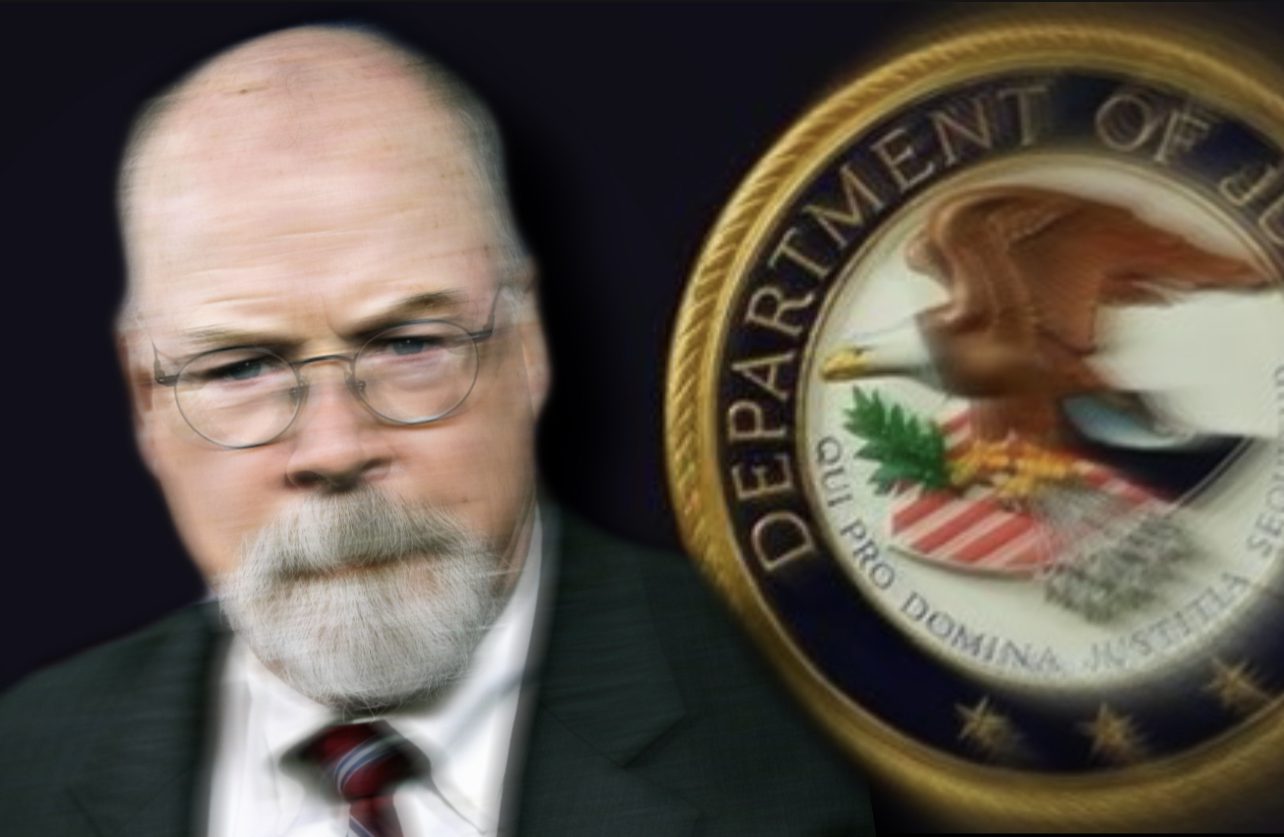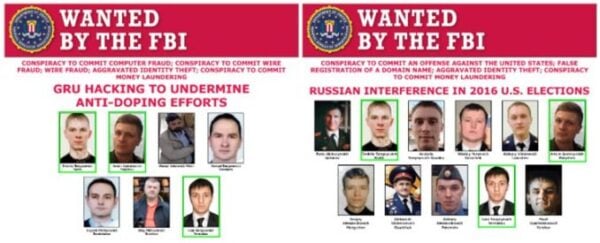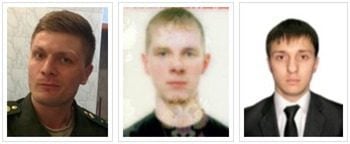
A breaking report by Margot Cleveland at The Federalist reveals Special Prosecutor John Durham is also investigating the alleged 2016 DNC server hack.
Recall, the DNC in the Spring of 2016 claimed their servers were hacked by Russian hacking groups dubbed ‘Fancy Bear’ and ‘Cozy Bear.’
The FBI, under Director Comey’s leadership at the time, asked the DNC to hand over their servers as part of the government’s investigation into the hacking.
The DNC refused to give the FBI their servers and outsourced the investigation to Crowdstrike.
Crowdstrike never offered any evidence to prove Russia hacked the DNC emails and sent them to WikiLeaks.
According to emails obtained by The Federalist, the same Georgia Tech researcher embroiled in the Alfa Bank hoax is being investigated in his role in the “origins” of the Democratic National Committee hacker scandal.
This was always a lie that was repeatedly promoted by the fake news.
According to our earlier report — Documents from the Intel Community that were held up by corrupt liar, Rep. Adam Schiff, show incredible information that destroys the Deep State’s many lies. The biggest lie was the Russia collusion sham based on the tale that Russia hacked the DNC and then gave the hacked emails to WikiLeaks, who in turn released them before the 2016 election to hurt Hillary Clinton.
Aaron Mate reported at the time.
Mueller stuck in the word “appear” in his report when suggesting Crowdstrike determined Russia stole DNC emails because there was zero proof of this:
On March 8, 2020 and before on June 16, 2019, we presented arguments against the Mueller gang’s assertion that the DNC was hacked by Russians.
Cyber expert Yaacov Apelbaum posted an incredible report with information basically proving that the DNC was not hacked by the Russians.
Apelbaum’s first argument is this –
According to the WaPo (using CrowdStrike, DOJ, and their other usual hush-hush government sources in the know), the attack was perpetrated by a Russian unit lead by Lieutenant Captain Nikolay Kozachek who allegedly crafted a malware called X-Agent and used it to get into the network and install keystroke loggers on several PCs. This allowed them to see what the employees were typing and take screenshots of the employees’ computer.
This is pretty detailed information, but if this was the case, then how did the DOJ learn all of these ‘details’ and use them in the indictments without the FBI ever forensically evaluating the DNC/HRC computers? And since when does the DOJ, an organization that only speaks the language of indictments use hearsay and 3rd parties like the British national Matt Tait (a former GCHQ collector and a connoisseur of all things related to Russian collusion), CrowdStrike, or any other evidence lacking chain of custody certification as a primary source for prosecution?
A second point by Apelbaum was –
… that three of the Russian GRU officers on the DOJ wanted list were allegedly working concurrently on multiple non-related projects like interfering with the 2016 United States elections (both HRC and DNC) while at the same time they were also allegedly hacking anti-doping agencies (Images 2-3).

Above are pictures of the individuals the FBI says were working on both the DNC/HRC email hacking and the Olympic doping projects.

The same guys were working on both projects which is all but impossible. (Do we really know if they’re even Russians?)
The fact that the three had multiple concurrent high impact and high visibility project assignments is odd because this is not how typical offensive cyber intelligence teams operate. These units tend to be compartmentalized, they are assigned to a specific mission, and the taskforce stays together for the entire duration of the project.
Next Apelbaum questioned the Mueller gang’s assertion that the ‘hacker’ named Guccifer 2.0 was a Russian –
Any evidence that Guccifer 2.0 is Russian should be evaluated while keeping these points in mind:
He used a Russian VPN service to cloak his IP address, but did not use TOR. Using a proxy to conduct cyber operations is a SOP [Standard Operating Procedure] in all intelligence and LEA [Law Enforcement Agency] agencies. [i.e. Russia would have masked their VPN service]
He used the AOL email service that captured and forwarded his IP address and the same AOL email to contact various media outlets on the same day of the attack. This is so overt and amateurish that its unlikely to be a mistake and seems like a deliberate attempt to leave traceable breadcrumbs.
He named his Office User account Феликс Эдмундович (Felix Dzerzhinsky), after the founder of the Soviet Secret Police. Devices and accounts used in offensive cyberspace operations use random names to prevent tractability and identification. Why would anyone in the GRU use this pseudonym (beside the obvious reason) is beyond comprehension.
He copied the original Trump opposition research document and pasted it into a new .dotm template (with an editing time of about 2 minutes). This resulted in a change of the “Last Modified by” field from “Warren Flood” to “Феликс Эдмундович” and the creation of additional Russian metadata in the document. Why waste the time and effort doing this?
About 4 hours after creating the ‘Russian’ version of the document, he exported it to a PDF using LibreOffice 4.2 (in the process he lost/removed about 20 of the original pages). This was most likely done to show additional ‘Russian fingerprints’ in the form of broken hyperlink error messages in Russian (Images 4 and 5). Why bother with re-formatting and converting the source documents? Why not just get the raw data out in the original format ASAP?
Apelbaum next discusses Guccifer 2.0 –
In June 21, 2016, Lorenzo Franceschi-Bicchierai from Vice Motherboard interviewed a person who identified himself as “Guccifer 2.0”. During their on-line chat session, the individual claimed that he was Romanian (see transcript of the interview below). His poor Romanian language skills were later used to unmask his Russian identify.
…I’m not a scientific linguist nor do I even know where to find one if my life depended on it, but I’m certain that you can’t reliably determine nationality based on someone impersonating another language or from the use of fake metadata in files. This elaborate theory also has the obvious flaw of assuming that the Russian intelligence services are dumb enough to show up to an interview posing as Romanians without actually being able to read and write flaunt Romanian.
After providing a couple more examples of why the Russian story doesn’t stick, Apelbaum closes with this –
The bottom line is that if we want to go beyond the speculative trivia, the pseudo science, and the bombastic unverified claims, we have to ask the real tough questions, mainly: is Guccifer 2.0 even the real attacker and how did he circumvent all of the logs during several weeks of repeated visits while downloading close to 2 GB of data?
According to The Federalist:
While it has been known since Sussmann’s indictment dropped in September 2021 that the Georgia Tech researchers had allegedly reviewed the Alfa Bank data and one of the white papers Sussmann provided to the FBI, there was previously no known connection to the government’s investigation into the DNC hack. However, one email contained in a cache of documents obtained on March 9 from Georgia Tech pursuant to a Right-To-Know request reveals Antonakakis’ involvement in the investigation into the hack of the DNC…
…Antonakakis reviewed the Alfa Bank white paper Hillary Clinton’s campaign lawyer later allegedly provided to the FBI in an effort to implicate Trump in a Russia conspiracy. This same man professes that data-driven scientific attribution is politically unbiased—even though Antonakakis believed “a DNS expert would poke several holes” in the hypothesis underlying the white paper given the government…
… The public storyline until now had been that CrowdStrike, the cybersecurity firm Sussmann hired in April 2016, had concluded Russians had hacked the DNC server, and that the FBI, which never examined the server, concurred in that conclusion. Intelligence agencies and former Special Counsel Robert Mueller likewise concluded that Russian agents were behind the DNC hack, but with little public details provided.
It now appears that DARPA had some role in that assessment, or rather Antonakakis did on behalf of DARPA, which leads to a whole host of other questions, including whether DARPA had access to the DNC server and data and, if so, from whom did the DOD’s research arm get that access? Was it Sussmann?
Most intriguingly, why is Special Counsel Durham concerned with the DARPA connection and the DNC hack or hacker in the first place?



Post a Comment